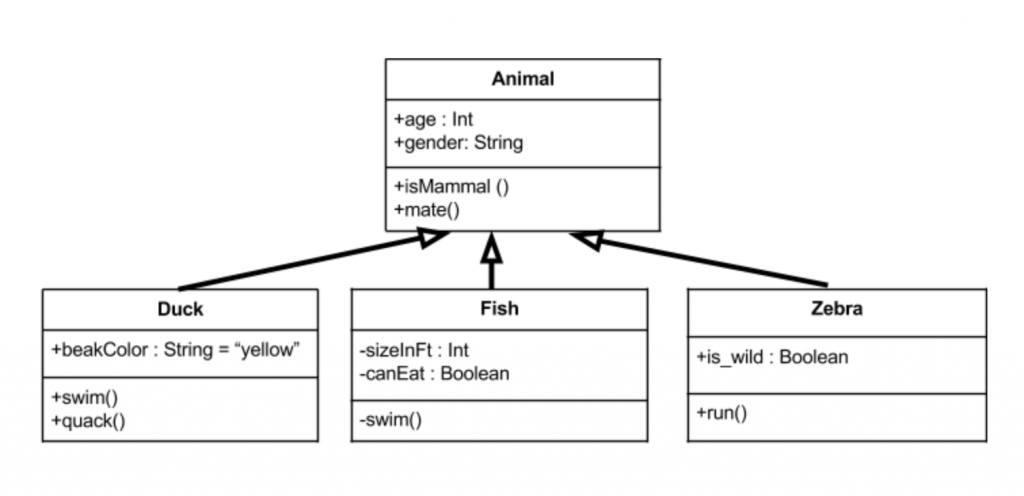Uml diagram its types all you need to know
Table of Contents
Table of Contents
If you’re working with Java, you may need to create diagrams to illustrate program structure, especially for larger projects. One popular way to do this is with UML diagrams. However, figuring out how to draw UML diagrams in Java can be a daunting task, especially if you’re not familiar with the various diagram types or how they work with Java code.
Creating UML diagrams in Java can be a challenging process, especially for beginners. This is because there are many different types of diagrams, and each type serves a specific purpose. Not only that, but there is also a significant amount of terminology associated with UML diagrams.
To draw UML diagrams in Java, you’ll want to start by deciding which diagram type is most appropriate for the task at hand. Typically, there are six main types of UML diagrams that are commonly used in Java development, including use case diagrams, class diagrams, sequence diagrams, state machine diagrams, activity diagrams, and component diagrams.
In this article, we’ll cover the basics of how to draw UML diagrams in Java, including the various diagram types and the purpose they serve. We’ll also provide some tips and best practices for creating effective UML diagrams in Java, as well as some tools and resources you can use to streamline the process.
Use Case Diagrams and Their Target
Use case diagrams are a type of UML diagram that is commonly used to represent the interactions between users, systems, and other entities in a software system. They are often used to help clarify the requirements of a system and can be useful during early stages of design and development.
When you create a use case diagram, you’ll want to start by identifying the actors that will interact with the system. Actors can be users, other systems, or external entities. Once you’ve identified the actors, you can create use cases to represent the interactions between the actors and the system.
If you’re new to use case diagrams, it can be helpful to use a tool like Visual Paradigm or Lucidchart to create your diagrams. These tools provide a range of templates and pre-built objects that can help you get started quickly. Additionally, using a tool can help simplify the process of editing and sharing your diagrams.
Class Diagrams: What They Are and How to Use Them
Class diagrams are a type of UML diagram that represents the structure of a system by showing the classes and their relationships. They are particularly useful for documenting the structure of object-oriented systems, including those written in Java.
To create a class diagram, start by identifying the classes in the system and their attributes and methods. You can then use associations, aggregations, and generalizations to show how the classes are connected.
When creating a class diagram, it’s important to keep in mind that the diagram should be easy to understand and should accurately reflect the structure of the system. Avoid cluttering the diagram with unnecessary information and use clear, concise labels for classes and their relationships.
Sequence Diagrams: How They Work and When to Use Them
Sequence diagrams are a type of UML diagram that shows how objects interact with each other over time. They are particularly useful for documenting the behavior of a system and can be used to represent scenarios or use cases.
To create a sequence diagram, start by identifying the objects in the system and the messages that they send to each other. You can then use lifelines to show the lifespan of each object and the order in which messages are sent and received.
When creating a sequence diagram, it’s important to keep in mind the order in which messages are sent and received. Use numbered arrows to show the flow of messages and be sure to include any conditions or loops that are part of the behavior.
State Machine Diagrams: What They Are and When to Use Them
State machine diagrams are a type of UML diagram that shows the behavior of an object in response to events. They are often used to describe systems that have complex behavior or state transitions, such as user interface components or network protocols.
To create a state machine diagram, start by identifying the states that the object can be in and the events that cause state transitions. You can then use transitions to show the conditions and actions associated with each state change.
When creating a state machine diagram, it’s important to keep in mind the order in which states change and the conditions that must be met for each transition. Use clear, concise labels for states and transitions, and make sure that the diagram accurately reflects the behavior of the system.
Tips for Creating Effective UML Diagrams in Java
When creating UML diagrams in Java, there are several best practices to keep in mind:
- Choose the appropriate diagram type for the task at hand
- Use clear, concise labels for classes and relationships
- Avoid cluttering your diagram with unnecessary information
- Make sure that your diagram accurately reflects the structure or behavior of the system
- Use a tool or resource to streamline the process of creating and editing your diagram
Question and Answer
Q: How do I choose the appropriate diagram type?
A: The appropriate diagram type will depend on the particular task or problem that you are trying to address. For example, use case diagrams are useful for clarifying requirements and identifying actors, while class diagrams are helpful for documenting the structure of a system. Consider the purpose of the diagram and choose the type that will best serve that purpose.
Q: How can I make sure that my diagram accurately reflects the structure or behavior of the system?
A: It’s important to test your system and validate your diagram to ensure that it accurately represents the behavior or structure of the system. You may also want to get feedback from others on your team to ensure that the diagram is complete and accurate.
Q: Are there any tools or resources that can help me create UML diagrams in Java?
A: Yes, there are a variety of tools and resources available to help you create UML diagrams in Java. Some popular tools include Visual Paradigm, Lucidchart, and PlantUML. Additionally, there are many online tutorials and articles that can help you learn more about UML diagrams and how to create them in Java.
Q: How can I ensure that my UML diagrams are easy to understand?
A: To ensure that your UML diagrams are easy to understand, use clear, concise labels for classes and relationships, and avoid cluttering your diagram with unnecessary information. Additionally, consider using colors or grouping to help organize your diagram and make it more visually appealing and easy to read.
Conclusion of how to draw UML diagrams in Java
Creating UML diagrams in Java can be a challenging task, but understanding the different diagram types and best practices can help simplify the process. By choosing the appropriate diagram type, using clear labels and avoiding clutter, and testing your diagram to ensure accuracy, you can create effective UML diagrams that will help you document and communicate the structure and behavior of your Java-based systems.
Gallery
How To Draw Uml Diagrams With Violet Uml Editor - Brainshac

Photo Credit by: bing.com /
Check Uml Class Diagram For Travel Agency - Latest Update - Phone Shed
Photo Credit by: bing.com / uml
Java - Creating UML Diagram From Specification - Stack Overflow

Photo Credit by: bing.com / uml java overflow implementation decorator
UML Diagram & Its Types – All You Need To Know

Photo Credit by: bing.com / uml inheritance clase analyze salma padre
UML Diagram JAVA

Photo Credit by: bing.com / uml arraylist linkedlist






